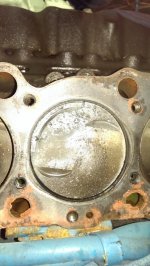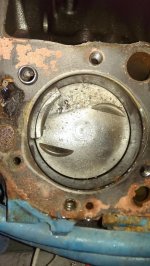Bob H.
Contributing Member
Got the 381 laid-up in heated storage this winter and did a compression test on both engines (454 model 350). Starboard engine looked good with seven cylinders at or near 150psi and one at 139psi. Port engine was another story; two cylinder at 90psi, five at 120 and one at 60 psi! Cylinder leakdown test shows a bad head gasket and a couple of leaky intake valves.
My question is this; should I be concerned about the lifters and camshaft with these issues and hours? Can I get an accurate read of camshaft wear (dial indicator) before teardown with these existing issues?
Thanks in advance,
My question is this; should I be concerned about the lifters and camshaft with these issues and hours? Can I get an accurate read of camshaft wear (dial indicator) before teardown with these existing issues?
Thanks in advance,



